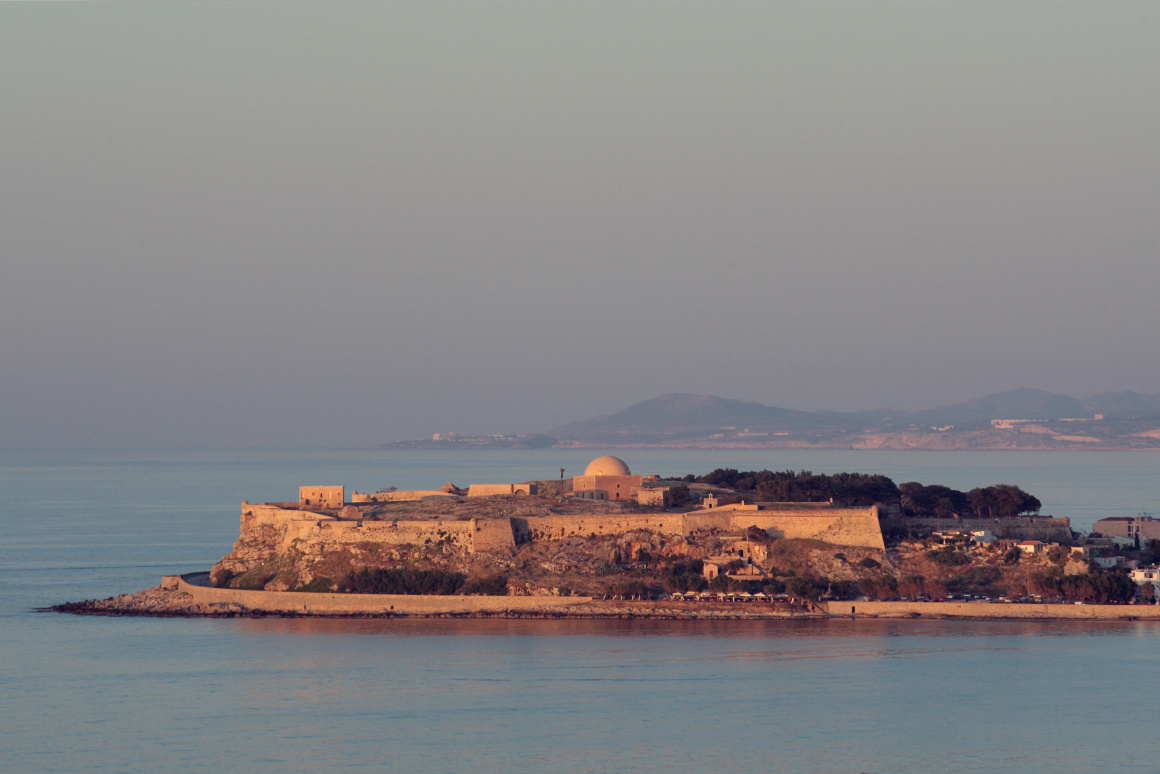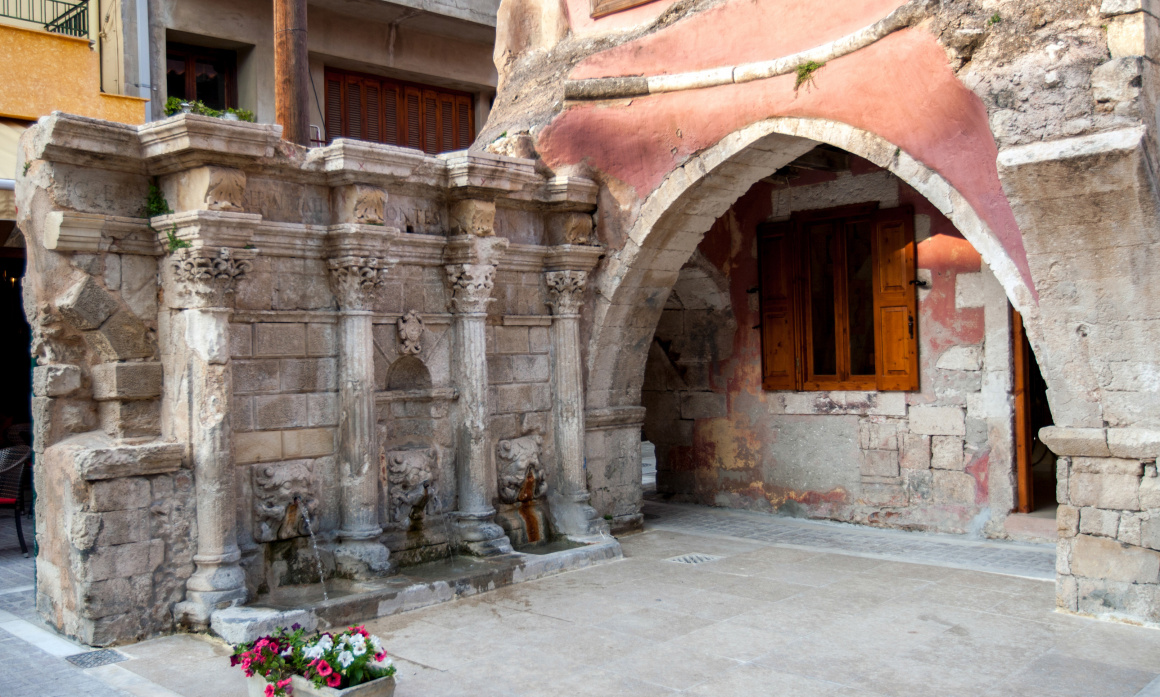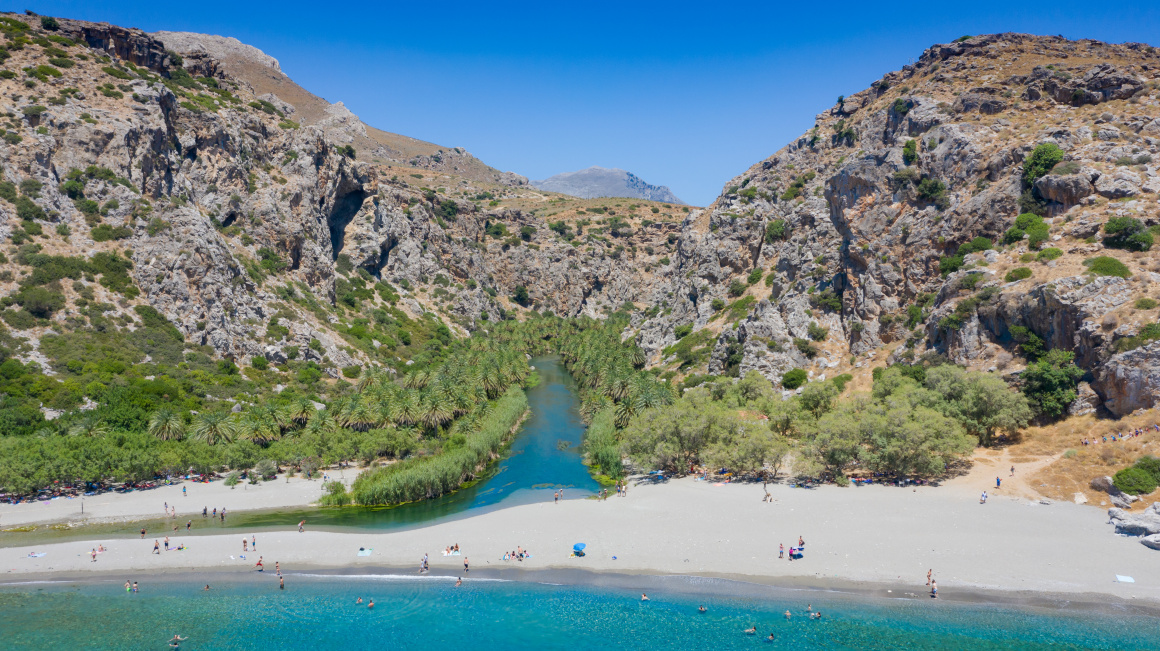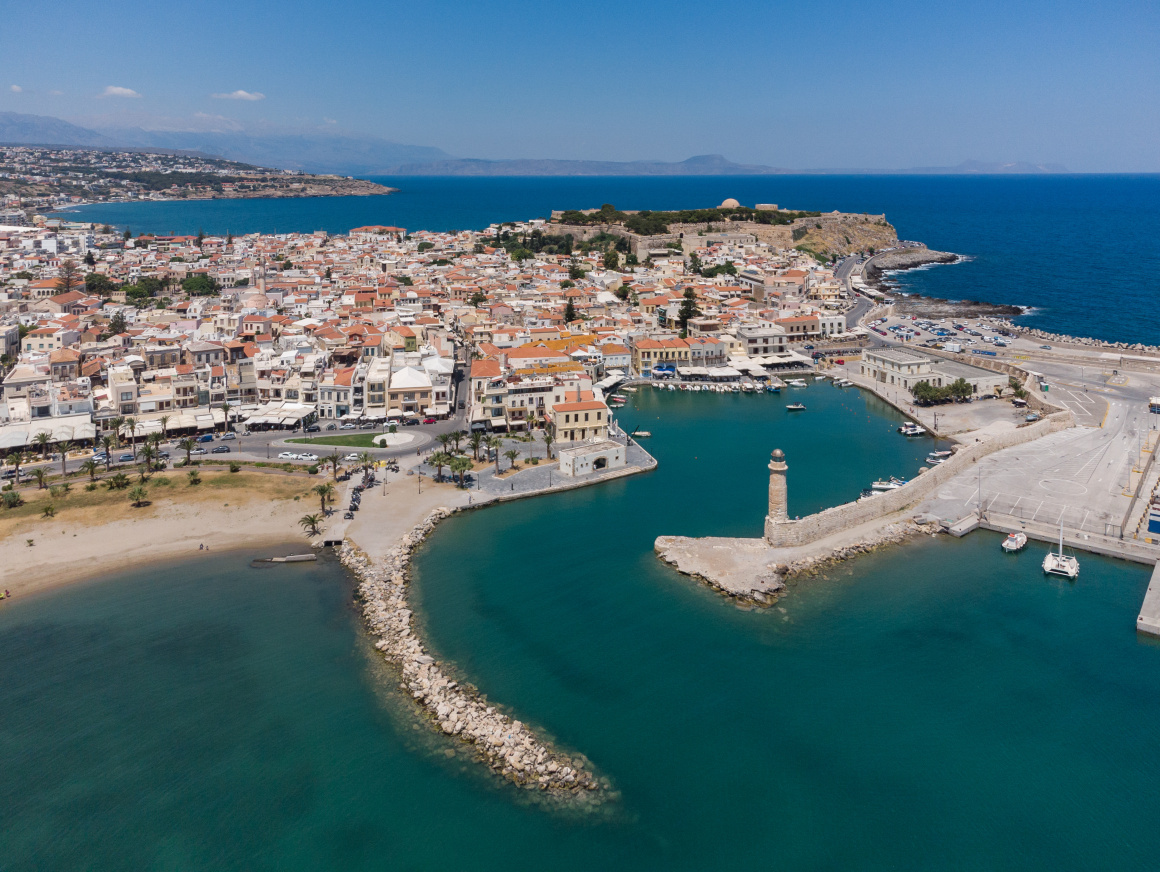Rethymno (Réthymnon) is a city that exudes historic charm and artistic soul. Nestled on Crete's northern coast, roughly midway between Chania and Heraklion, Rethymno Town (pop. ~34,000) enchants with its beautifully preserved Old Town, one of the best in Greece. Picture cobbled lanes lined with Venetian mansions, ornate doorways, and wooden Ottoman-era balconies overhead. The aroma of roasting coffee and baking bougatsa pastry wafts through the morning air. Locals pedal by on bicycles, and students from the university give the town a lively, youthful energy. Personal Note: Having lived here as a student, I spent countless afternoons wandering without a map, discovering hidden courtyards draped in bougainvillea, sketching by the old Venetian harbour, or chatting with artisans in their workshops. Rethymno taught me that every corner has a story, and often a friendly face eager to share it.
Historical Highlights
Rethymno's layered history is visible at every turn, Venetian and Ottoman influences especially. Start at the Fortezza, the star-shaped 16th-century Venetian fortress crowning the town. Its massive stone walls enclose remnants of barracks, a church-turned-mosque (the Sultan Ibrahim Mosque with its distinctive dome), and cannons overlooking the sea. The Fortezza is the best sunset spot, as you walk its ramparts, the town's terracotta roofs glow and you can spot landmarks like the Rimondi Fountain (a 1626 Venetian fountain with lion heads spouting water) in the distance. Below the fortress, explore the Old Harbour: a postcard-perfect scene of a 13th-century Venetian lighthouse at the pier's end and colourful fishing boats bobbing in the water. Tavernas hug the curve of the harbour. Yes, it's touristy, but undeniably romantic at night when the lighthouse casts a golden path on the water.

 'The Fortezza citadel of Rethymno' - Attribution: Jerzy Strzelecki
'The Fortezza citadel of Rethymno' - Attribution: Jerzy StrzeleckiWandering the Old Town, don't miss:
Rimondi Fountain on Platanos Square, where cool spring water still flows, a gathering spot since 1626. I often refilled my water bottle here en route to class.
Neratze Mosque (Gazi Hussein Mosque): Originally a Venetian church, later a mosque, now a music conservatory. Its tall minaret is a prominent skyline feature and you can sometimes go up for a view.
Venetian Loggia: a 17th-century arcade building, once a gentlemen's club, now houses a shop for archaeological reproductions. The architecture is elegant and makes a good photo backdrop (plus, the A/C inside is a respite on hot days).
Guora Gate: the sole surviving city gate from medieval walls – step through it from modern town into the Old Town, it's like a portal in time.

 'Fontanna Rimondi, Retimno' - Attribution: Jerzy Strzelecki
'Fontanna Rimondi, Retimno' - Attribution: Jerzy StrzeleckiEach street has stories: Souliou Street has many antique and book shops, while Makry Steno (Long Alley) is known for its mix of Christian and Muslim houses side by side. Observe how an Ottoman-era wooden balcony protrudes above an older stone Venetian doorway, this encapsulates Rethymno's blended heritage.
Museums & Culture
For a dose of culture, Rethymno offers a few gems:
Archaeological Museum of Rethymno: Right outside the Fortezza entrance (recently moved to a new building), showcasing Minoan finds, figurines, pottery from surrounding areas like ancient Eleftherna. The display of Late Minoan armour and weapons is fascinating, hinting at Crete's Bronze Age society beyond just Knossos.
Historical and Folklore Museum: A small but rich collection in a Venetian house, where you see traditional Cretan textiles, weaving looms, and even an old olive press. I loved the room recreating a 19th-century Cretan home, it gave context to how people lived, dressed, and cooked in more recent centuries.
Contemporary Art Museum: Modern Rethymno has an arty side, with galleries and street art aplenty (look for murals off Dimakopoulou street). The Contemporary Art Museum features rotating exhibitions by Greek artists and is a cool contrast to all the history.
Cretan Wine Tasting: While not a museum, I highly recommend visiting a local wine cellar like Oinoxoos House, where you can learn about Crete's wine history and taste local varietals such as Vilana white and Kotsifali red. The knowledgeable and friendly staff provide an engaging and informative experience, offering detailed tasting notes for each wine.
Foodie Paradise
Rethymno is famous in Crete for its cuisine, often claiming to have the island's best restaurants, and I can't disagree. There's something for every palate:
Local Tavernas: To Pigadi (meaning “The Well”) is set around an old Venetian well. It serves elevated Cretan dishes, the lamb with stamnagathi (wild greens) is divine. Zefyros in the harbour offers seafood. Expensive but their grilled octopus and sea urchin salad justify it. For more rustic charm, Vasilis Taverna in the alley behind the Rimondi fountain does excellent baked snails and hearty moussaka.
Meze and Raki: Rethymno's student population means great mezedopoleia. Hasika is a hip meze spot fusing tradition with creativity. Try the smoked eggplant with pomegranate or kalitsounia cheese pies with thyme honey. They serve small plates meant to share over tsikoudia (raki) or local beer. I had many long evenings here with friends, sampling and chatting as plate after plate arrived.
Sweets & Cafes: Don't miss Meli Melo Loukoumades for their traditional Greek doughnuts drizzled with honey and sprinkled with cinnamon. Rethymno's bougatsa, filled with myzithra cheese, is rivalled only by Chania's. Meli is a cute cafe whose name means honey, specialising in honey-based desserts and a life-changing walnut cake. For ice cream, Gelato.it near the Rimondi Fountain offers a variety of flavors, including non-dairy options.
Street Food: Rethymno has the unique “βρώμικο” scene, literally “dirty” food, meaning late-night grub. Along the coastal road, find food trucks selling souvlaki and the local speciality “gyros me ap'ola” (with everything). At 2am after a night out in the Old Town's bars, nothing beats a messy pita stuffed with pork gyro, fries, salad, and tzatziki.
Nightlife & Events
Rethymno nightlife starts late and is lots of fun. Begin with a stroll on the lit-up harbour or a drink at Fraoules (Strawberries) bar on the marina, then head into the Old Town's bar district around Ethnikis Antistaseos Street. Metropolis bar and Living Room are popular for cocktails in stylish courtyard settings. For dancing, clubs like Fortezza Lighthouse Club (by the marina) spin Greek and international hits until dawn. But honestly, a simple pleasure is grabbing a bottle of local wine and sitting on the Rethymno municipal beach at night with friends, listening to the waves and strumming a guitar, a common sight with local youths and students.
The city also hosts notable events, the Rethymno Carnival (just before Lent) is one of Crete's biggest, parades, costumes, music, and a huge street party atmosphere. In summer, the Renaissance Festival brings theatre and music performances (often at the Erofili Theatre inside the Fortezza, watching Shakespeare under Cretan stars in a 16th-century fortress = magic). There's also a Wine Festival and numerous art happenings year-round, often posted on the cultural centre's bulletin.
Beaches & Day Trips
City beach, a long sandy stretch running east from town, is convenient but can be busy in peak season, still, it's clean and offers watersports. If you have time, explore beyond town:
Episkopi Beach (15 km east) is wide open, less developed, great for a quieter swim.
Preveli Beach & Palm Forest (south of Rethymno, requires a scenic drive or day tour) – a must-see, a palm-lined river meets the sea. You can boat or hike in, and it's an exotic oasis feel. Coupled with a visit to Preveli Monastery above, known for its role sheltering Allied soldiers in WWII, it's a full day of nature and history. (Preveli Palm Beach)
Arkadi Monastery (23 km inland): A national symbol of resistance, site of the tragic 1866 explosion during the Cretan revolt. The monastery's Venetian baroque church façade is stunning, and the sacrifice made here is deeply moving, the ossuary with skulls of the fallen brings history close. I highly recommend a morning trip here, combine it with a visit to the Amari valley villages for a traditional meal.
Chromonastiri & Mili Gorge: Just 11 km from Rethymno, the village of Chromonastiri has beautifully restored noble houses and a Military Museum in a villa. Nearby is the verdant Mili Gorge with ruins of old water mills, an easy hike that feels worlds away from the city bustle.

 'Palm beach Preveli on Crete, Greece' - Attribution: dronepicr
'Palm beach Preveli on Crete, Greece' - Attribution: dronepicrAccommodation
Staying in Rethymno Old Town is the best for atmosphere. Many boutique hotels are set in restored Venetian homes with courtyards:
Avli Lounge Apartments – luxurious suites, each uniquely designed, plus an excellent restaurant. They even run cooking workshops if you're keen.
Rimondi Boutique Hotel – split into two complexes (Estate and Palazzo) offering pools and spa.
Casa Vitae Villas – romantic spot with stone arches, often a honeymoon pick.For budget, plenty of small pensions and studios exist, or stay in the newer part of town (cheaper, still walkable to centre).
A fun alternative is to stay just outside old town in Koumbes area or along the beach road, where bigger hotels (e.g., Aquila Porto Rethymno or Atlantis Beach Hotel) provide resort-like amenities, pools, gyms, private beach section. But personally, I favour sleeping under high wood-beam ceilings in a 500-year-old building, waking to church bells and seagulls. One thing: if you have a car, note that Old Town is largely pedestrian. Hotels help arrange parking or direct you to municipal lots.
Getting Around
Rethymno is best explored on foot or bicycle (many hotels lend bikes, the city is mostly flat). The local bus can take you to suburbs, Arkadi, or nearby beaches cheaply. Intercity buses (KTEL) from Rethymno station connect to Chania (1h) and Heraklion (1.5h) frequently, as well as south coast places like Plakias, Agia Galini, etc. The city doesn't have its own airport, but both Chania and Heraklion airports are equidistant (around 1 hour by car). Ferries run a few per week to Santorini in summer, and daily ferries to mainland (Athens/Piraeus) go from Souda or Heraklion. Pro Tip: Rethymno now has a small marina where you can catch catamaran excursions or even book a local sailing trip at sunset, offering a lovely view of the fortress from the sea.
Conclusion
Rethymno's allure lies in its contrasts: It's lively but laid-back, historic yet youthful, sophisticated yet warmly traditional. One can spend the morning visiting a 400-year-old monastery, the afternoon swimming and sipping freddo cappuccinos by the beach, and the night dancing or enjoying raki with locals who might share village tales or invite you to a family celebration. In Rethymno, Crete's famed hospitality, philoxenia, is in full bloom.
If Chania and Heraklion are the bookend capitals, Rethymno is the heart that beats in between, a heart filled with music (sometimes literal, from the lyra players practicing in the Conservatory), art, learning, and life's simple pleasures. Don't rush through it. Linger in a hidden café courtyard with a good book, join an evening walk where locals of all ages promenade by the sea, and let Rethymno's multifaceted beauty sink in. It's a town that embraces you like an old friend, and you'll likely leave with a bit of it forever embracing your own memories.
To find your ideal hotels in Rethymno Town and around the world, we’ve created Travelmyth, the innovative hotel search engine with a wide range of category filters. Whether you’re looking for cheap hotels in Hounslow or hotels near golf courses in Marco Island, Travelmyth is the best place to get hotel recommendations based on your interests.

